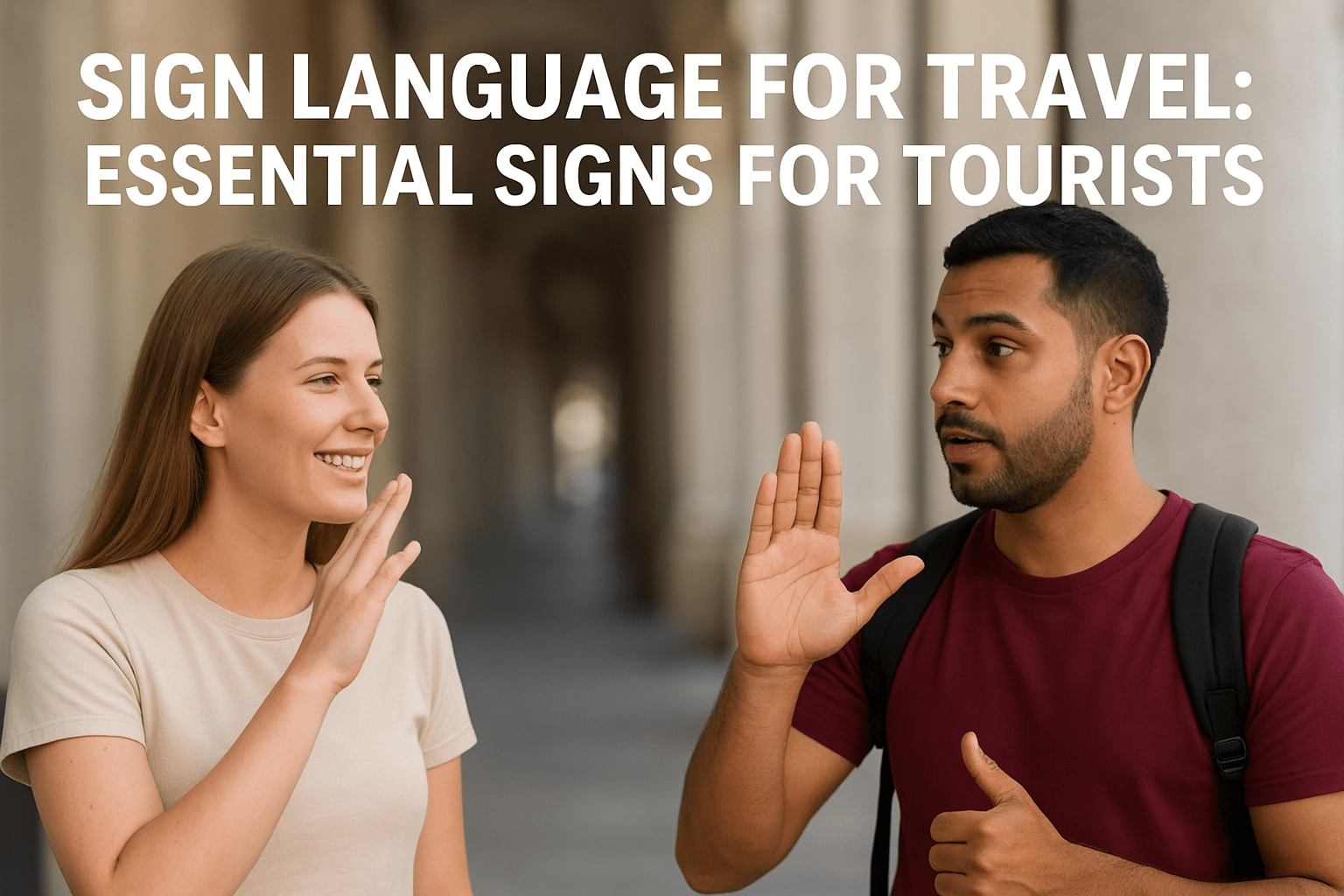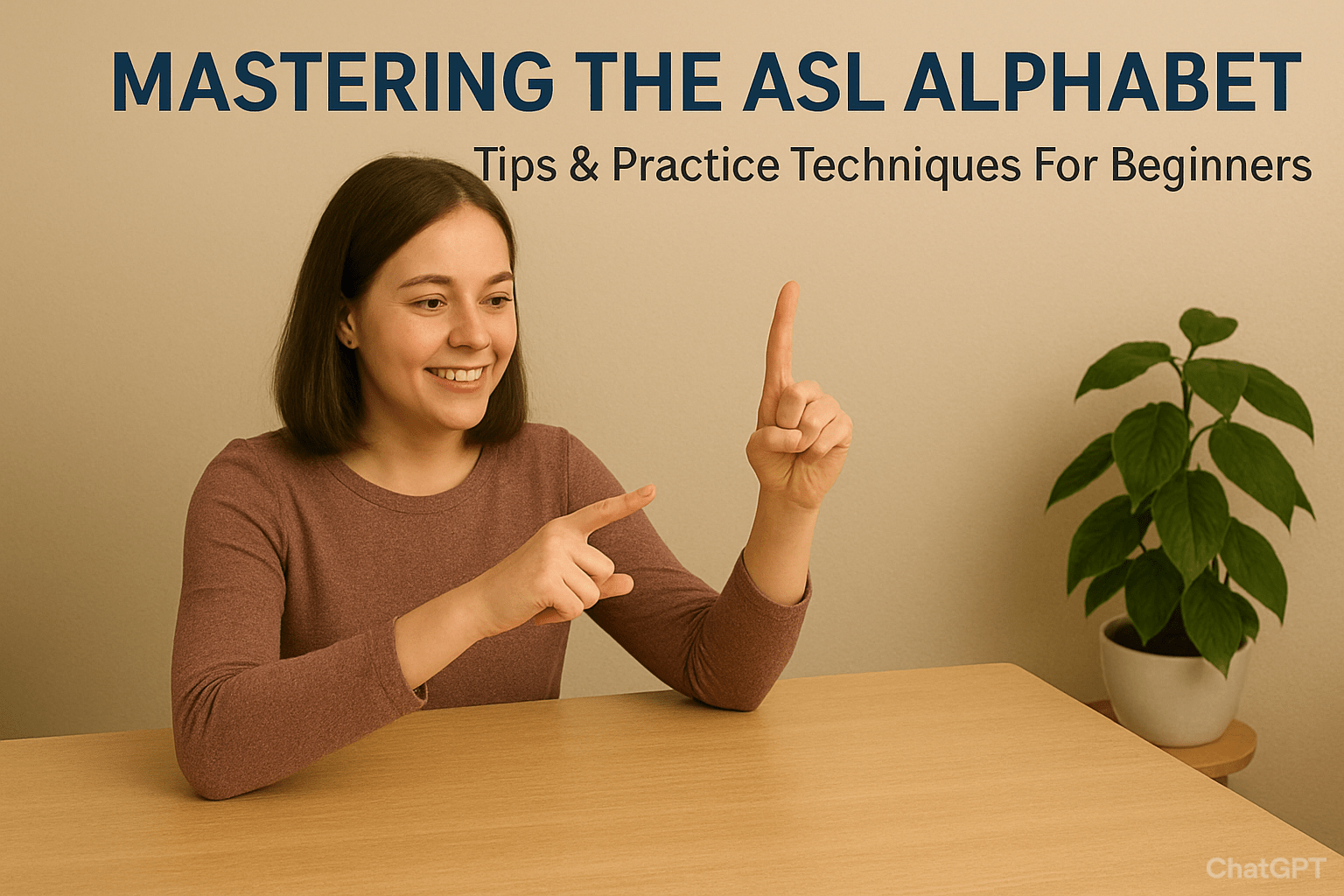Whether you’re exploring a bustling city or a quiet countryside, communication is at the heart of every great journey. Learning travel sign language isn’t just practical — it’s a bridge of empathy.
You may not know the local spoken language, but signs are visual and universal in spirit. They allow you to connect instantly — to smile, thank, ask, or help without a single spoken word.
It’s also deeply respectful. When you make an effort to use even a few signs, it shows awareness of accessibility and appreciation for Deaf culture — something many travelers overlook.
(🔗 Related: How Facial Expressions & Grammar Shape Sign Meaning)
1. Start with the Essentials: Everyday Travel Signs
If you’re short on time and want to get the most out of your learning, start with these basic travel-friendly signs. These can help you navigate, order food, and show gratitude wherever you go.
✋ Greetings & Polite Expressions
- Hello 👋
- Thank you 🙏
- Sorry / Excuse me
- Please
- Good morning / Good night
These are simple gestures that make a huge difference in interactions with locals — Deaf or hearing alike.
🚕 Getting Around
- Help
- Where?
- Bathroom / Toilet
- Hotel
- Bus / Train / Taxi / Airplane
- Left / Right / Straight
👉 Pro tip: Practice pairing your signs with pointing or simple gestures for clarity when communicating with people who may not know sign language.
🍽️ Food & Drink
- Eat / Food
- Drink / Water
- Tea / Coffee
- Hungry / Full
- Bill / Check
- Vegetarian / Non-vegetarian
If you’re visiting India, it’s especially useful to learn these in Indian Sign Language (ISL) — since regional food signs can vary!
(🔗 Learn more in: Essential Signs You Should Know: Everyday Vocabulary in Sign Language)
🏥 Emergency & Assistance
- Doctor / Hospital
- Police / Help / Danger
- Lost
- Phone / Call
- Where is…?
These could be literal lifesavers. Remember: when learning travel sign language, focus on both handshape and facial expression — it helps convey urgency clearly.
2. Learn from Real Signers (Not Just Charts)
Many apps and printed charts show signs as static pictures, but sign language is dynamic. It uses motion, rhythm, and facial cues that you can’t capture in a still image.
That’s why it’s better to watch real signers — like those featured in Sign Academy’s Sign Dictionary, which curates verified signs from reliable YouTube sources.
When watching videos:
- Replay slowly until you understand the hand motion.
- Observe the facial expression — it changes meaning dramatically.
- Practice signing along in front of a mirror.
(🔗 Also read: Using Videos Effectively to Learn Sign Language)
3. Travel Scenarios You Can Practice Before You Go
Here are some quick sign-based phrases you can practice to feel confident while traveling:
- “Where is the bathroom?” – [WHERE + TOILET]
- “I’m lost.” – [I + LOST]
- “Can you help me?” – [HELP + ME + PLEASE]
- “How much is this?” – [HOW-MUCH + THIS]
- “I need a doctor.” – [NEED + DOCTOR]
- “I don’t understand.” – [I + NOT + UNDERSTAND]
👉 Bonus Tip: Record yourself signing these phrases and compare with online sign videos to fine-tune accuracy.
4. Make Signing Part of Your Travel Routine
You don’t have to be fluent to make signing part of your trip.
Here’s how to integrate travel sign language into your experience:
- Learn 5–10 signs daily during your trip.
- Use them during check-ins, food orders, and casual greetings.
- If visiting a Deaf café or cultural center, try a short conversation entirely in sign.
You’ll be amazed at how warmly people respond when you try. Many Deaf communities around the world are thrilled to see travelers take an interest in sign communication.
5. Bonus: Travel Sign Tips for Different Regions
- In the U.S. or Canada: Learn a few basics in ASL (American Sign Language).
- In India: Use ISL (Indian Sign Language) — and remember, gestures can vary by region.
- In Europe: Some countries have their own national sign languages (like BSL, LSF, or DGS).
When in doubt, always start with visual clarity and a friendly expression — signing transcends spoken words, but kindness is understood everywhere.
6. Stay Motivated While Learning on the Road
Learning travel sign language is easier when it’s woven into daily experiences:
- Watch short sign videos in your hotel room.
- Label photos or journal entries with signs you learned that day.
- Teach a travel buddy a few signs — it doubles your practice time!
It’s not about perfection; it’s about connection.
7. Learn on the Go with Sign Academy
SignAcademy.org offers an accessible, travel-friendly way to learn signs through real video demonstrations — from basic greetings to travel emergencies.
Simply type a word into the Sign Dictionary, and you’ll get video results from verified signers in ASL and ISL.
It’s perfect for on-the-go learning — whether you’re preparing for your next adventure or communicating during one.


